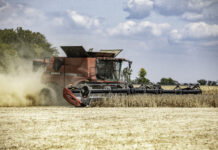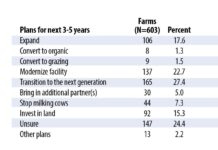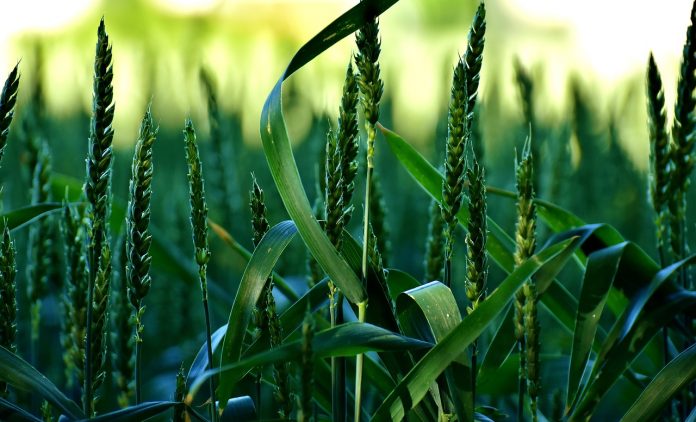Nearly all plants (if not all plants) found on land are receiving help in some way, shape, or form from microbial partners in the soil. A small amount of soil, about a handful, may contain billions of organisms within it, including bacteria, fungi, insects, algae and so on.
These microbes contribute to a soil’s health and help produce the rich, organic humus layer found within that soil. Yet often times these microbes receive little credit for the critical role they play because what they do occurs out of sight and therefore out-of-mind.
Mycorrhizal fungi
If a problem comes up within the pasture, we may first look at weed pressure and soil fertility, but often the living world below that helps support the organisms living above gets overlooked. One group of microbial organisms plays an important role in the health of the majority of plants: the mycorrhizal fungi.
The word mycorrhiza is derived from the Greek words mykes and rhiza, which translates into “fungus root.”
It is estimated that about three quarters of vascular plants have mycorrhizal associations.
AM fungi
Arbuscular mycorrhizal (AM) fungi, the fungi often responsible for nutrient exchange using structures known as arbuscules within a plant’s roots, formed a symbiotic relationship with plants to assist with nutrient uptake, much like a plant’s roots do.
AM fungi can improve nutrient uptake even in nutrient deficient soils, which is thought to be a reason that some forage crops produce acceptable yields in low soil test phosphorous soils.
Fossil records indicate that these relationships between plants and fungi are old — on the scale of hundreds of millions of years. AM fungi produce small threads known as hyphae that increase the surface area available to a plant for nutrient uptake, especially with immobile nutrients such as phosphorous.
Hyphae both look (at least under a microscope) and act like a secondary root system for plants. Of course, nothing in life is free.
The fungus provides this service to a plant in exchange for carbohydrates and other photosynthates. Without AM fungi, a plant would have difficulty in picking up the required phosphorous and zinc to remain healthy.
Without the plant, the mycorrhiza would be unable to obtain the carbon it requires for survival.
Nutrient uptake is not the only benefit provided by these fungi. AM fungi can provide a level of defense against pathogens, including fungi, bacteria, nematodes and some insects.
This is thought to be due, in part, to competition. There is only so much space on a plant root’s surface, and if mycorrhizae are already established, pathogens such as Phytophthora sp. will be less likely to find space to infect.
Furthermore, mycorrhizae can affect root exudates that change the composition of the microbiota surrounding the roots through favoring certain microbes over others.
Organisms excluded from roots may include pathogens. In some plants, mycorrhizae can even prime a plant’s defenses for pathogens by triggering the production of plant hormones.
Other benefits include improved tolerance of drought and soil contaminants as well as enhancement of other microbial interactions. Microbial interactions that have appeared to benefit from mycorrhizal interactions include nitrogen-fixing bacteria and biological control organisms.
AM fungi also improve soil structure by increasing the number of soil aggregates through the production of glomalin, a glycoprotein found on hyphae that aid in water and nutrient transport. Once hyphae on roots lose the ability to transport water and nutrients, the glomalin is released from hypha into the soil.
The released glomalin aids in carbon storage and improves soil quality through the formation of soil aggregates. This helps to improve water flow within the soil by improving soil structure and encouraging growth of other beneficial microorganisms.
Management
With all of the benefits of the AM fungi, what management strategies can you use to maximize the benefits of these relationships? Certainly the balance between the fungi in the soil is a delicate one, and not all AM fungi are created equal.
For example, there are many species of AM fungi that compete with each other within a root system. This competition can negatively impact nutrient uptake benefits provided by either species, whereas a root system with a few dominant species of AM fungi that are good at nutrient uptake may greatly benefit a host plant, depending on the host and site conditions.
In some cases, greater diversity of AM fungi is more beneficial to host plants. Soil management history and geography greatly influence species selection and which species do well with which hosts.
Some agricultural practices will negatively impact AM fungi. For example, soil disturbance can reduce AM fungal growth, diversity, and glomalin concentration in soils by damaging fungal hyphae.
Research has primarily focused on tillage practices in field crops that result in damage to fungal hyphae, but other disturbances most relevant to our pastures that may influence AM fungi in the soil by disrupting hyphal networks, including pipeline development and mining activities, are not as well studied in the Midwest.
What is likely the most influential practice that can reduce mycorrhizal activity in pastures, though, is over-fertilization, which reduces the activity of some AM fungi by changing the N:P ratios within the soil.
When too much phosphorous or nitrogen is available to plants from over application of fertilizers, the services provided by AM fungi are no longer needed for nutrient uptake. When soils are nutrient deficient, plants form these associations with their fungal partners, which can subsequently reduce the need for fertilizer applications.
Here in eastern Ohio, many pastures are located on reclaimed mine lands that are known for poor soil quality and structure. During the first few years after mine reclamation occurs, mycorrhizal content in the soil remains low but will eventually re-establish, given that the appropriate host plants are present.
For example, initial establishment of forage crops such as winter wheat will not promote much mycorrhizal colonization, but tall fescue is great at enhancing establishment of these fungi since this grass species is a more suitable host.
Plants often found in pastures that do not promote mycorrhizal associations include buckwheat and brassicas such as forage radishes. If these plants are found in your pasture, mycorrhizal- dependent grasses and legumes may not be the best option for seeding.
Commercial
Some mycorrhizal inoculums are available commercially, although studies on applications of AM fungi that are often found in biofertilizers has been inconsistent. This is likely due to the location factor — AM fungi found locally are more adapted to that area and hosts found within the region than AM fungi brought in from elsewhere.
If considering testing AM fungal inoculations in a pasture, start small and use species of AM fungi compatible with the location and management system. Inoculation timing and competition with other AM fungi and soil microbes will greatly influence inoculation success.
Many commercial inoculants are targeted toward greenhouse and garden applications and may come with a hefty price tag — up to $300 for a 25-pound bag that does not guarantee success.
Before applying mycorrhizal inoculants, know which environments the product works best in and if the benefits of the product’s key organism is supported by credible science data. But most importantly, ask if there is a way to improve the mycorrhiza community already in the soil.
This is certainly an area where more research is needed, especially for forage grasses and legumes.
Mycorrhizal fungi provide a great ecosystem service for our pastures that, with good management, can save money down the road through improvements to soil quality and reductions to fertilizer applications. These fungi have few input costs as they are already available in the soil. These fungi will provide the morel support pastures need to get through hard times (pun intended).














Good pun- I was confused at first, thinking it was a typo and checking the context to make sure it meant ‘morals’, then saw the comment… However, then I thought , while morels are fungi, they are not the type being written about. Morels are ecto mycorrhizae, not endo mycorrhizae as all arbuscular mycorrhizal fungi are. Ecto mycorrhizae don’t penetrate the root hairs of plants, they merely get very close to them, while still trading nutrients and water with their hosts, same as AMF do. AMF dfon’t form above ground fruiting bodies like morel mushrooms. Ecto mycorrhizae generally do form fruiting bodies (mushrooms) and also are generally hosted by trees, where AMF aren’t. So they preform similar functions but in different niches in the overall ecology of our landscape. But still funny to us fun guys.